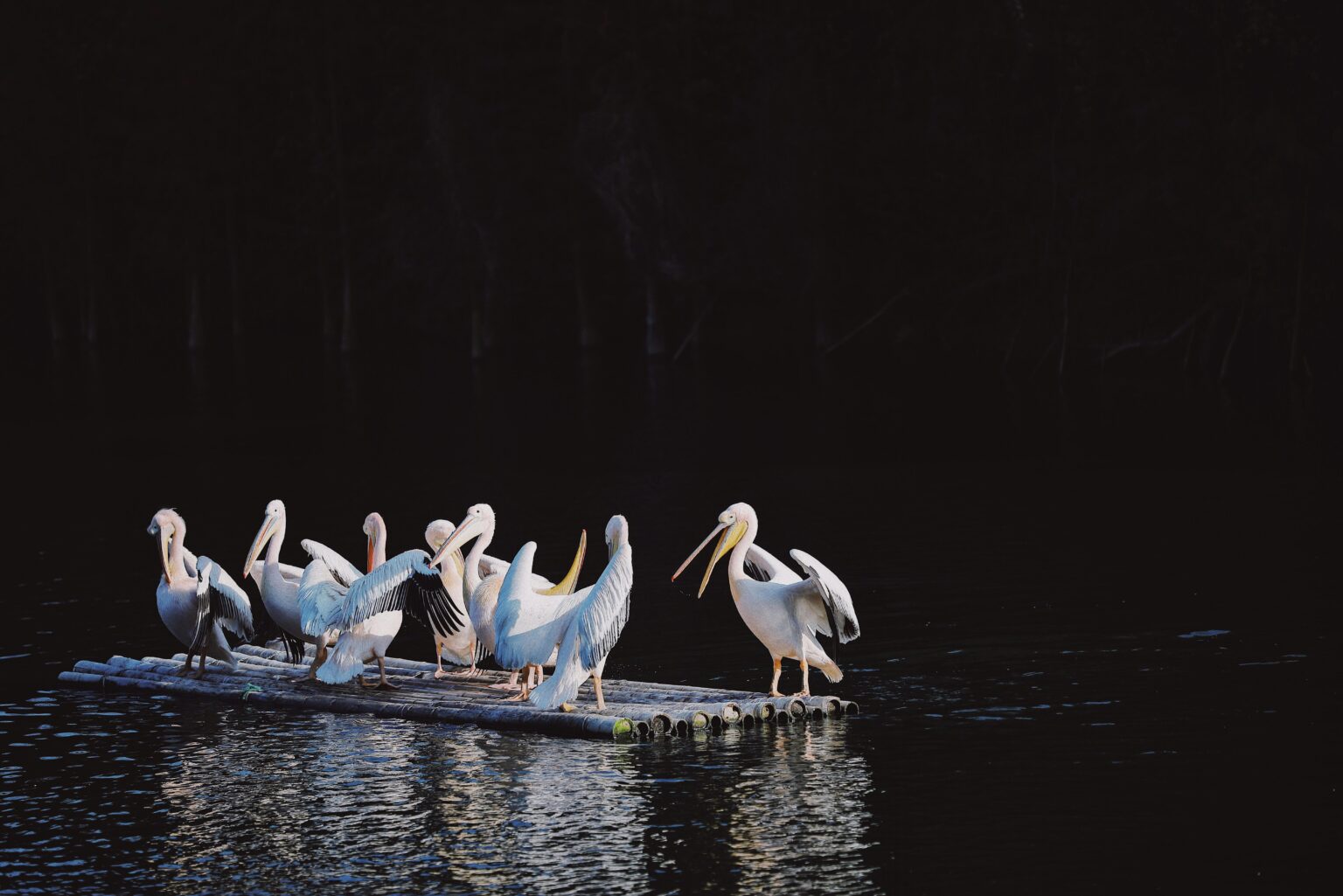Introduction to white pelicans
White pelicans, with their impressive wingspans and striking white plumage, are a sight to behold. These majestic birds glide gracefully across the skies, often spotted in large groups as they navigate through various habitats. Once facing population declines, white pelicans have experienced a remarkable resurgence in recent years. Their journey is not just about survival; it’s also about thriving in diverse ecosystems. As we explore the fascinating world of these incredible birds, you’ll discover what makes them so special and why their rising numbers matter to our environment. Join us as we dive into the lives of white pelicans and uncover the secrets behind their success story!
Migration patterns of white pelicans
White pelicans are known for their impressive migratory journeys. Each year, these striking birds travel thousands of miles between breeding and wintering grounds.
They typically nest in large colonies near freshwater lakes in the northern United States and Canada during spring. As summer wanes, they prepare for a long trek southward to warmer climates.
During migration, white pelicans often follow established routes along major waterways. They rely on thermals—rising columns of warm air—to conserve energy while soaring high above the ground.
Their timing can vary based on environmental conditions. Factors like temperature changes or food availability influence when they embark on this incredible journey.
Once they reach their winter habitats, usually found along the Gulf Coast or central Mexico, these majestic birds settle into more stable communities until it’s time to return north again. The rhythm of their migration is a testament to nature’s cycles and resilience.
Reasons for the increase in white pelican populations
The resurgence of white pelican populations is an intriguing phenomenon. Several factors contribute to this positive trend.
Habitat restoration efforts have played a crucial role. Wetlands and lakes are being revitalized, providing ideal nesting grounds for these birds. Healthy ecosystems support their breeding cycles.
Environmental regulations have improved water quality in many regions. Cleaner waterways attract fish, the primary food source for pelicans. With abundant food available, their survival rates soar.
Another factor is climate change. Warmer weather patterns can create longer breeding seasons and more favorable conditions for migration routes.
Public awareness and conservation initiatives also boost numbers. Communities rally around protecting local habitats, ensuring that these majestic birds thrive alongside human development.
Altogether, these elements combine to foster a flourishing environment where white pelicans can rebound significantly after years of decline.
Impact on ecosystems and other species
The rise in white pelican populations has a notable impact on ecosystems. As these birds thrive, they influence their habitats significantly. Their feeding habits affect fish populations and the overall health of aquatic environments.
White pelicans primarily consume small fish. This predation can help maintain balanced ecosystems by preventing overpopulation of certain species. In turn, this allows for a diverse array of aquatic life to flourish.
However, increased numbers of white pelicans may compete with other bird species for resources like nesting sites and food sources. This competition can put pressure on local wildlife communities, potentially leading to shifts in population dynamics among various avian species.
Moreover, as umbrella species, healthy white pelican populations indicate robust wetland ecosystems. Monitoring their presence helps conservationists assess the overall well-being of these crucial environments while highlighting interconnected relationships within nature’s web.
Conservation efforts for white pelicans
Conservation efforts for white pelicans are crucial to their survival. Organizations across North America work tirelessly to protect these magnificent birds and their habitats.
Wetlands restoration plays a vital role in these initiatives. Healthy ecosystems support larger populations of fish, which are essential for the feeding habits of pelicans. Many projects focus on cleaning and revitalizing lakes, rivers, and marshes where these birds thrive.
Public awareness campaigns also promote understanding of the challenges white pelicans face. Educating communities about habitat protection encourages local involvement in conservation activities.
Research is another key component. Scientists track migration patterns and breeding success rates to gather important data that informs conservation strategies. This knowledge helps shape policies aimed at safeguarding nesting sites from human encroachment.
Collaboration between government agencies, non-profits, and volunteers amplifies the impact of conservation programs, ensuring that future generations can enjoy watching these stunning creatures soar through our skies.
How people can help protect and support white pelicans
Supporting white pelicans can start with simple actions in your daily life. Reducing plastic use is crucial, as these birds often mistake debris for food. Opt for reusable items to help keep their habitats clean.
Participating in local conservation efforts makes a difference. Volunteer opportunities often arise at wildlife preserves or during bird-watching events. Engaging with organizations dedicated to protecting wetlands can amplify your impact.
Educating others about the plight of white pelicans promotes awareness. Share information through social media or community gatherings, inspiring friends and family to take action too.
Consider making donations to wildlife protection funds focused on avian species. Financial support helps fund research and rehabilitation programs essential for maintaining healthy populations.
Enjoy observing these magnificent creatures responsibly. Respecting their natural habitats while engaging in eco-friendly tourism ensures they flourish for generations to come.
The beauty and importance of these majestic birds
The white pelican is a true marvel of nature. With its striking pure white plumage and impressive wingspan, it commands attention as it soars gracefully through the sky. Watching them glide over lakes or wetlands is an unforgettable experience.
These birds are not just visually stunning; they play a crucial role in their ecosystems. As skilled fishers, they help maintain healthy aquatic environments by controlling fish populations. Their presence indicates a balanced ecosystem, making them vital for biodiversity.
Moreover, white pelicans serve as indicators of environmental health. A thriving population signifies clean waterways and abundant food sources. They connect us to the natural world, reminding us of our responsibility to protect these magnificent creatures and their habitats.
Their social behavior further adds charm—nesting in colonies and working together during feeding displays fosters community among them while captivating birdwatchers everywhere.
Conclusion
White pelicans captivate with their grace and beauty. Their rise in population is a testament to nature’s resilience and adaptability.
These magnificent birds not only enrich our ecosystems but also inspire awe in those who encounter them. They serve as indicators of environmental health, reminding us of the delicate balance within habitats.
The future of white pelicans depends on collective effort. Conservation initiatives play a critical role in ensuring their thriving populations continue to flourish across North America.
Engaging communities can foster awareness and support for these majestic creatures. Simple actions can lead to significant change, from protecting habitats to advocating for sustainable practices.
Embracing the presence of white pelicans enhances our connection with nature. Let’s cherish their existence, recognizing both their beauty and ecological importance as we move forward together into a hopeful future.
FAQs
Q:1 What are white pelicans?
A: White pelicans are large, distinctive birds known for their striking white plumage and long wingspan. They primarily inhabit freshwater lakes and wetlands across North America.
Q:2 Where do white pelicans migrate?
A: These remarkable birds embark on extensive migrations, traveling thousands of miles between their breeding grounds in Canada and the northern United States to wintering sites along the southern U.S. coast and Mexico.
Q:3 Why is there an increase in white pelican populations?
A: The rise in white pelican populations can be attributed to several factors, including successful conservation efforts, improved wetland habitats, and a decrease in hunting pressure. These elements create a favorable environment for breeding and feeding.
Q:4 How do white pelicans affect ecosystems?
A: As top predators within their environments, white pelicans play a crucial role in maintaining the balance of aquatic ecosystems. Their feeding habits help control fish populations while also providing food sources for other wildlife when they hunt successfully.
Q:5 What conservation efforts exist for protecting white pelicans?
A: Various organizations work tirelessly to protect these majestic birds through habitat restoration projects, monitoring programs, and public education campaigns aimed at raising awareness about the importance of conserving wetland areas.
Q:6 How can individuals help support white pelican populations?
A: People can contribute by participating in local clean-up events at lakes or wetlands where these birds thrive. Additionally, spreading awareness about habitat preservation helps ensure that future generations will continue to enjoy observing these magnificent creatures.
Q:7 Why should we appreciate the beauty of white pelicans?
A: Their elegance adds value not just to our natural world but offers unique opportunities for birdwatchers and nature enthusiasts alike. Protecting them ensures biodiversity continues thriving within our ecosystems while fostering appreciation for wildlife as part of our shared heritage.

















